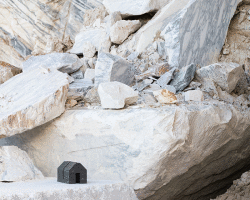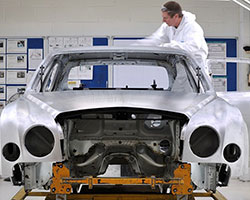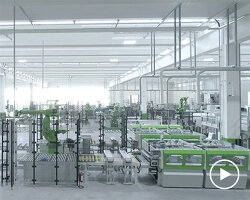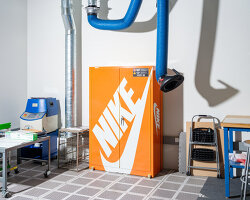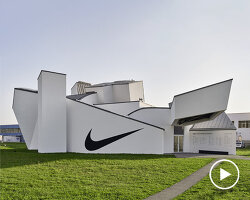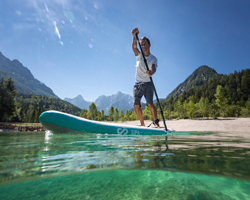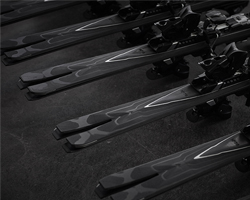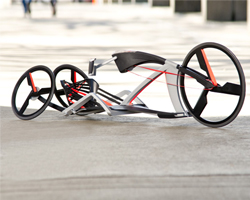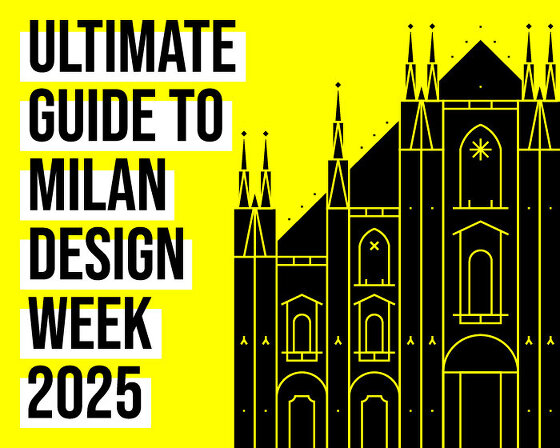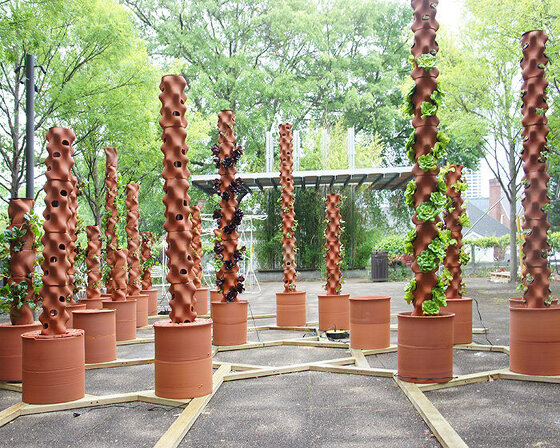a few days ago, designboom visited NIKE‘S small and exclusive italian factory. the facility specializes solely in the production of the brand’s top-of-the-line, professional athletic boots and is located in montebelluna just forty minutes from the city of venice in the countryside for nike’s newest and lightest football boot, the NIKE GS (or green speed). we’re happy to offer our readers images and a video of the making process.
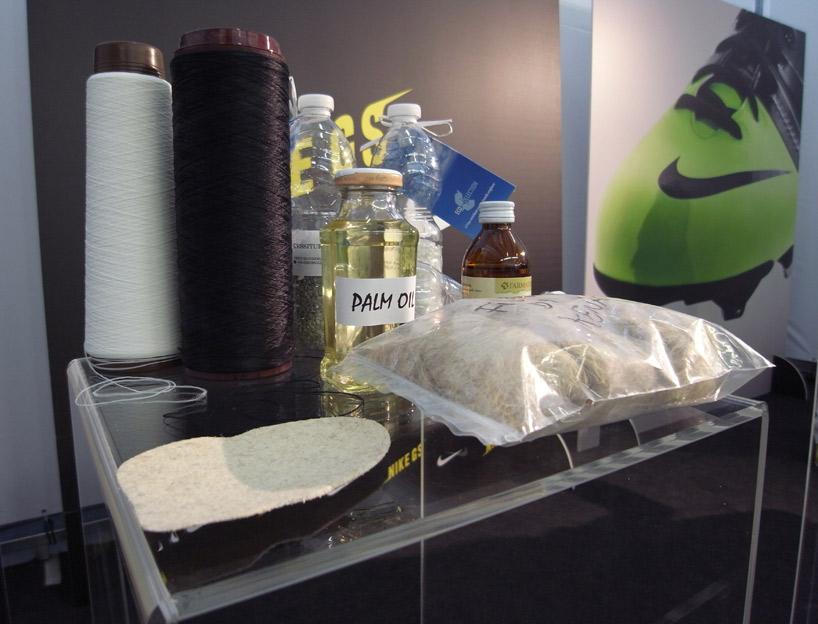 the materials which comprise each shoe made in the small factoryimage © designboom
the materials which comprise each shoe made in the small factoryimage © designboom
nike was founded in 1964 in beaverton, oregon, USA, under the name ‘blue ribbon sports’ by bill bowerman and phil knight as a sportsware and equipment manufacturing company. today nike, inc. is the world’s largest, most recognizable and most profitable organizations in the filed of sports business. though the corporations’ roots are in the united states, their factories and niketown stores are found all over the globe.
nike’s selection of this particular location for their manufacturing plant is no coincidence. the region is known for its rich history of artisan shoe construction in italy– a country world renowned for their skill in the production of artisan footwear. within this cozy italian factory, an innovation team, product development team and production group, comprised of 15 individuals with a collective experience of 350 years in footwear, were able to build the nike GS. our behind-the-scenes look at nike’s production facility pictures the efforts made by nike’s team of creatives to develop the lightest and most minimal shoe available form their brand, observing the construction of their sustainable soccer shoe from start to finish.
the traction plate of the boot is crafted from a mix of material including 50% castor beans and 50% plastic where the sock liner is made from 100% castor beans. the laces, tongue and lining of the nike gs, are formed from a minimum of 70% recycled materials while the collar and toeboard have a material makeup including least 15% recycled matter. the concept boot is not formed from 100% recycled matter and energy, yet it is the first wide-reaching production demonstration by nike of the potential for sustainable or low-impact design in the development of high-performance football boots.
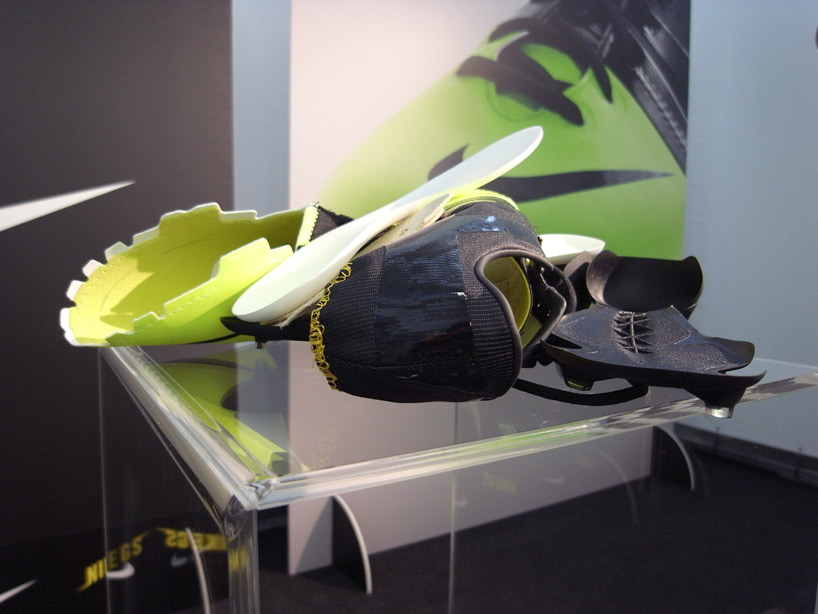 segments of the shoe in varied states of constructionimage © designboom
segments of the shoe in varied states of constructionimage © designboom
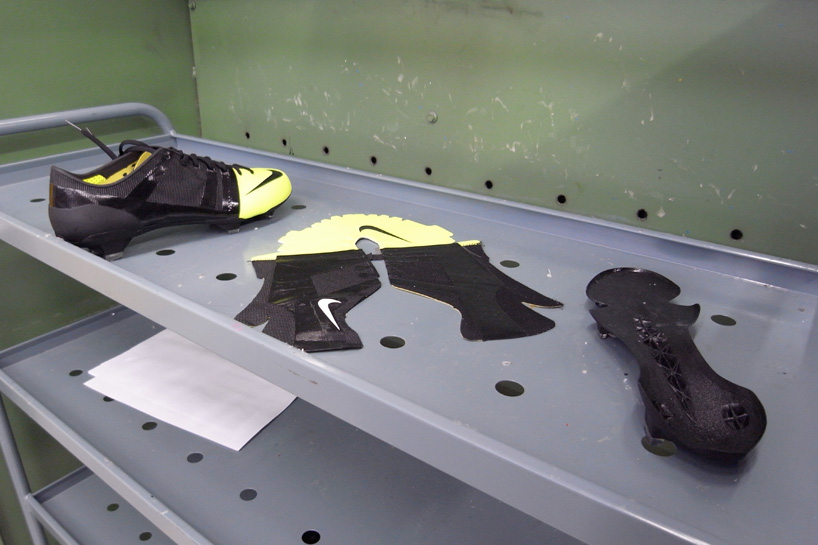 individual components of the shoeimage © designboom
individual components of the shoeimage © designboom
designboom’s nike greenspeed factory visitvideo © designboom
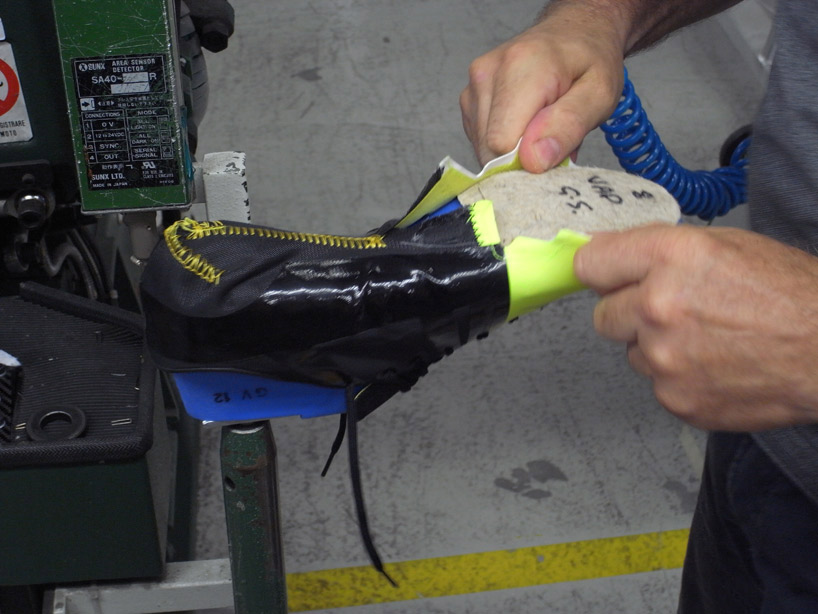 moulding the upper over the toe boardimage © designboom
moulding the upper over the toe boardimage © designboom
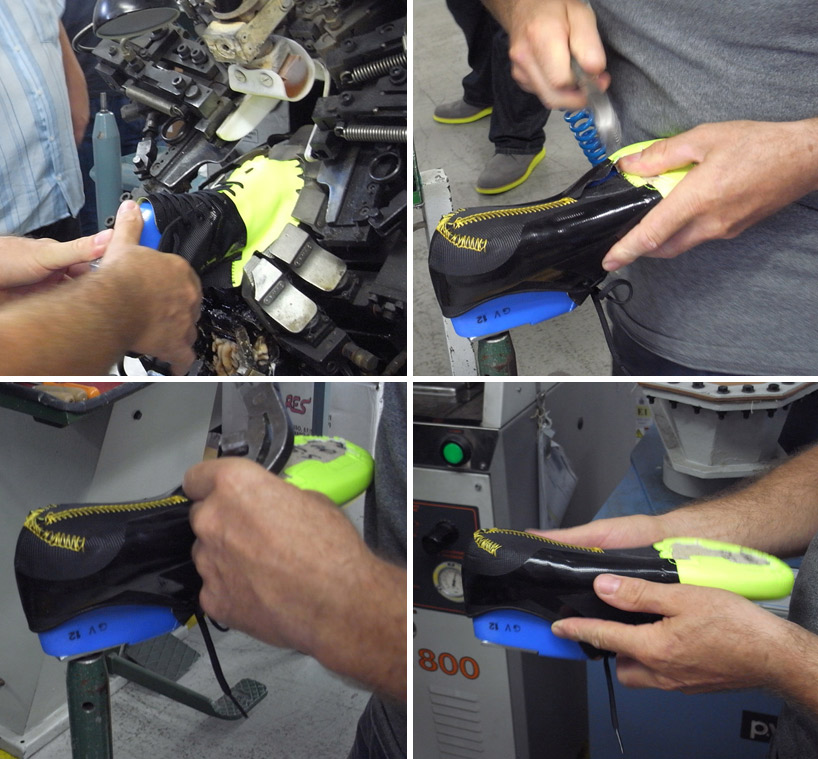 pulling the toe and upper into formimage © designboom
pulling the toe and upper into formimage © designboom
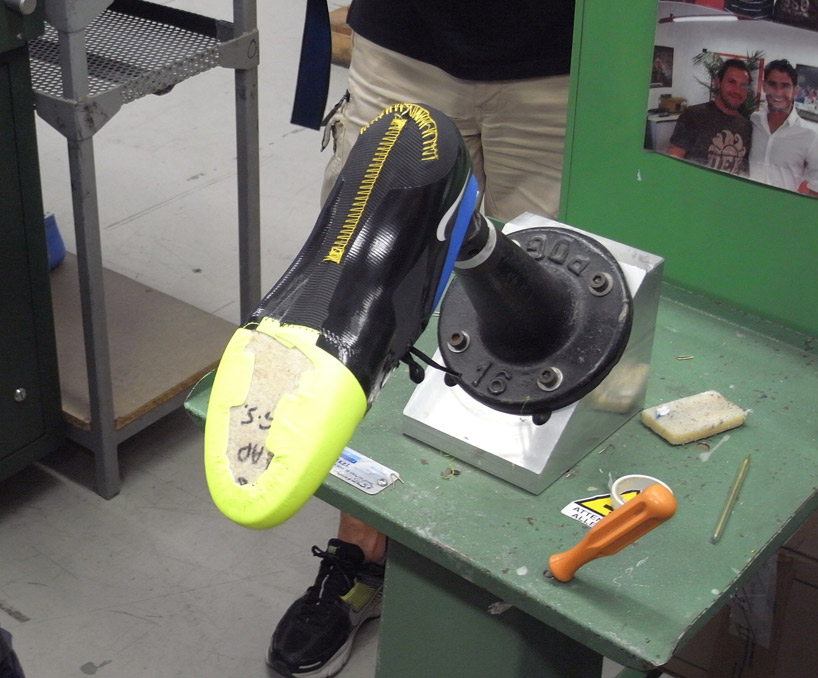 resting for a moment as the form fits the shape of the mouldimage © designboom
resting for a moment as the form fits the shape of the mouldimage © designboom
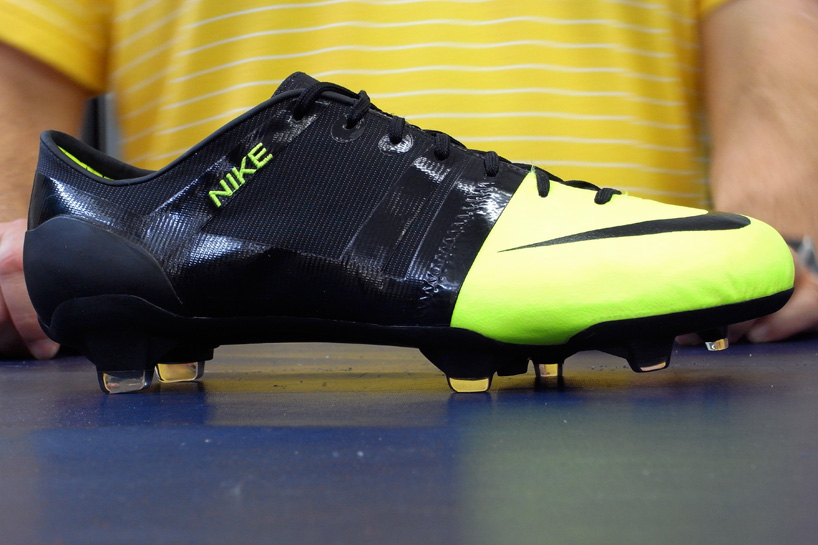 the completed bootimage © designboom
the completed bootimage © designboom
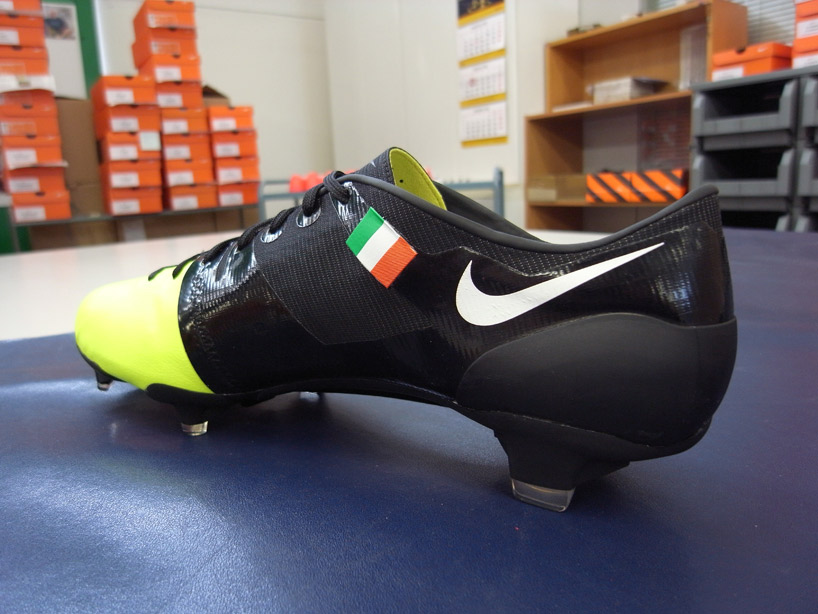 each shoe is outfitted with the flag of the country that wears the bootimage © designboom
each shoe is outfitted with the flag of the country that wears the bootimage © designboom
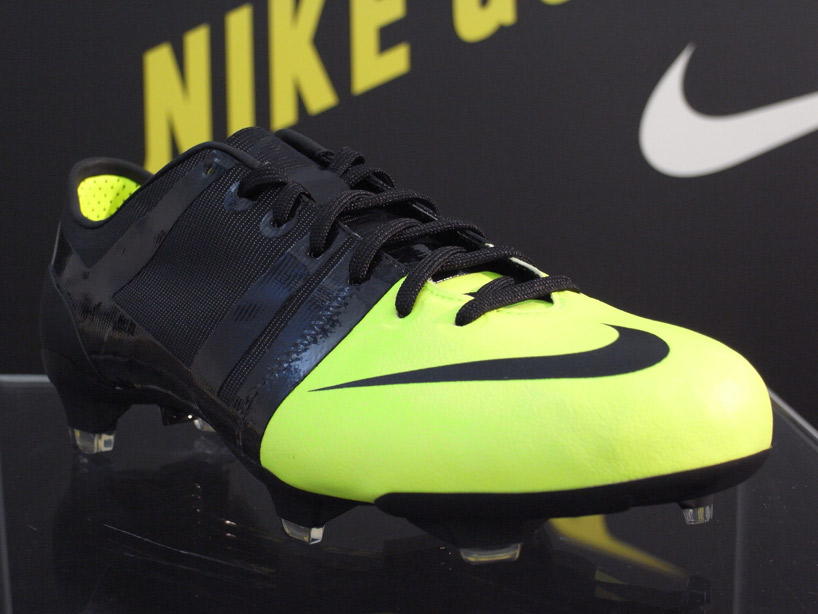 the nike GSimage © designboom
the nike GSimage © designboom
 the underside of nike’s newest bootimage © designboom
the underside of nike’s newest bootimage © designboom
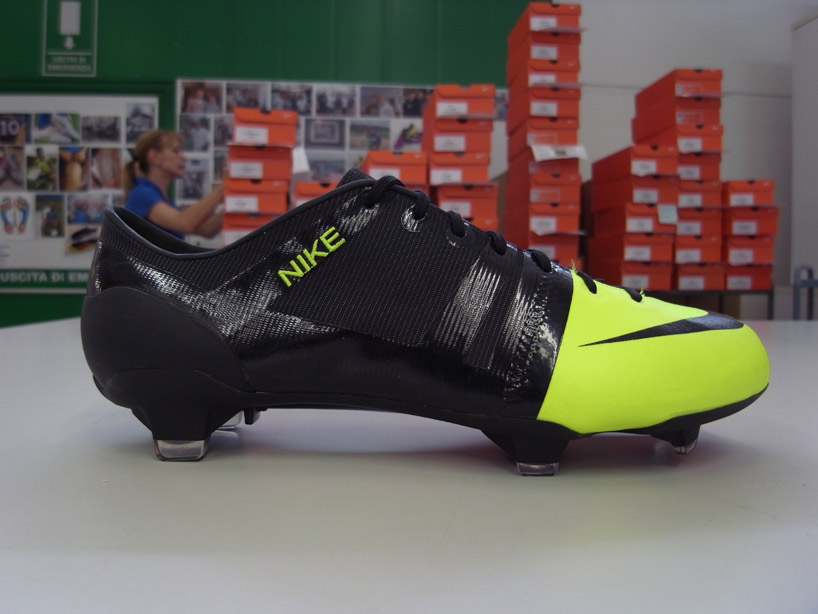 the boot ready for packagingimage © designboom
the boot ready for packagingimage © designboom
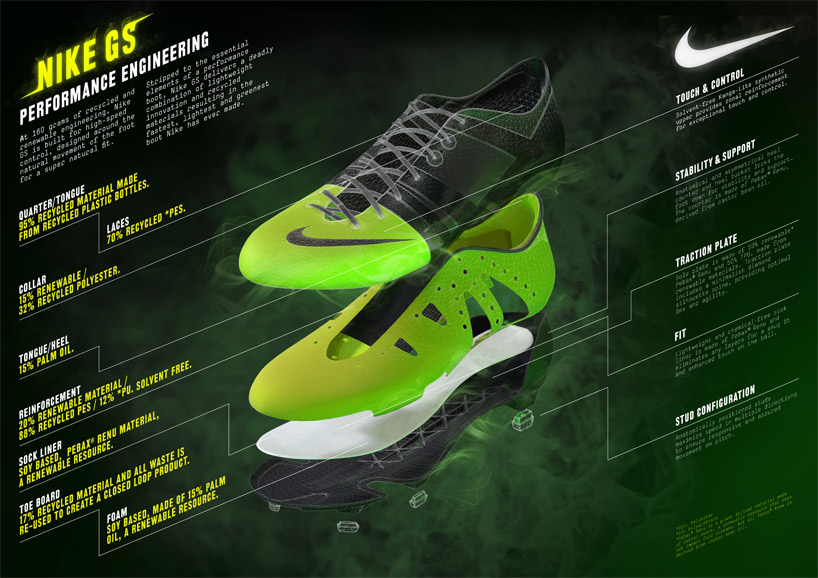 graphic breakdown of the boot’s componentsimage © designboom
graphic breakdown of the boot’s componentsimage © designboom
‘green’ aspects of the nike GS green speed:-quarter/tongue – 95% recycled material-reinforcement – 20% renewable material-collar – 15% renewable + 32% recycled polyester-lining – 88% recycled polyester / 12% pu. solvent free-laces – 70% recycled polyester-foam – soy based, made of 15% palm oil, a renewable resource-toe board –17% recycled material and all waste is re-used to create a closed loop product-tongue- made of 95% recycled material
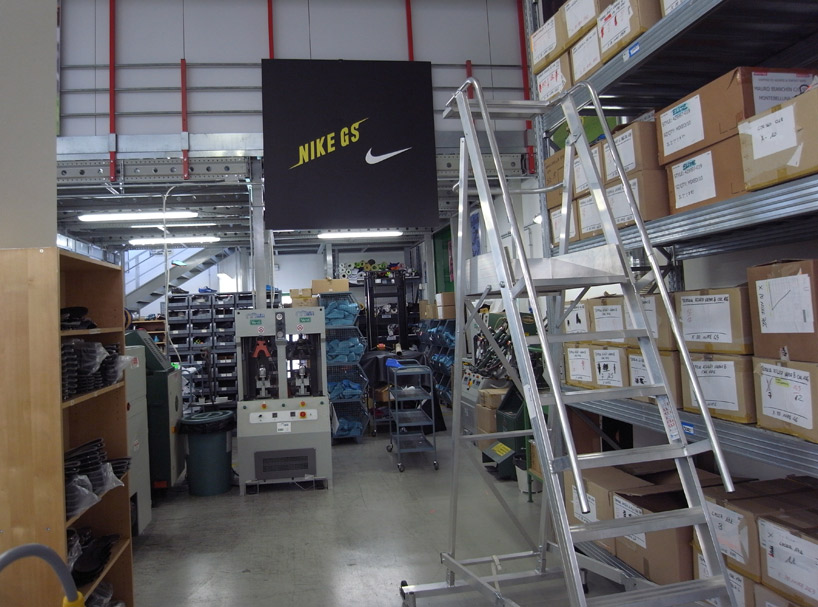 a view of the nike GS signage within the small factoryimage © designboom
a view of the nike GS signage within the small factoryimage © designboom
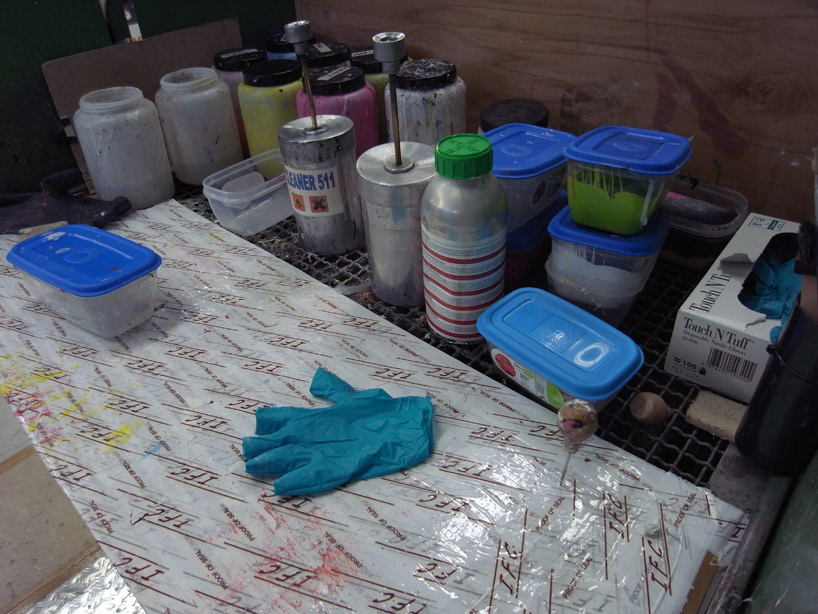 the station where rubber cement is applied to the bootimage © designboom
the station where rubber cement is applied to the bootimage © designboom
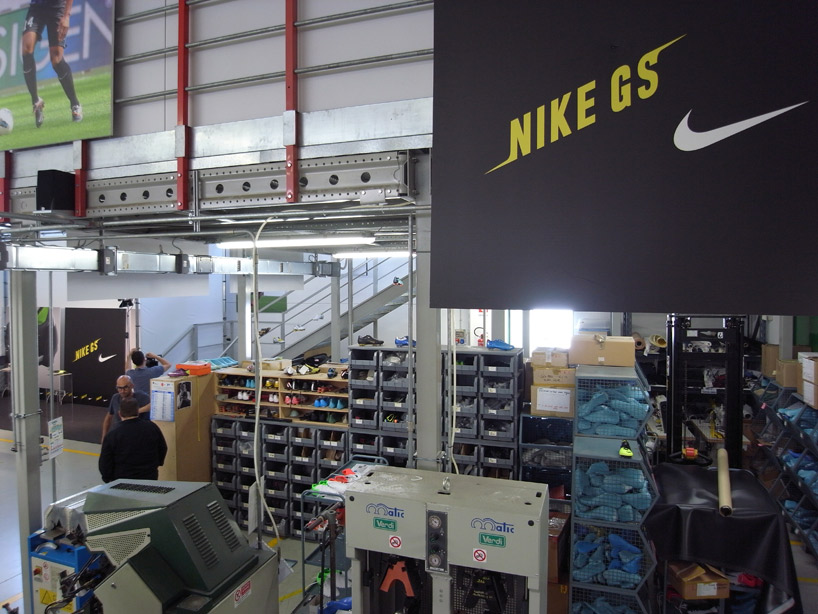 an additional view of the italian nike production facilityimage © designboom
an additional view of the italian nike production facilityimage © designboom
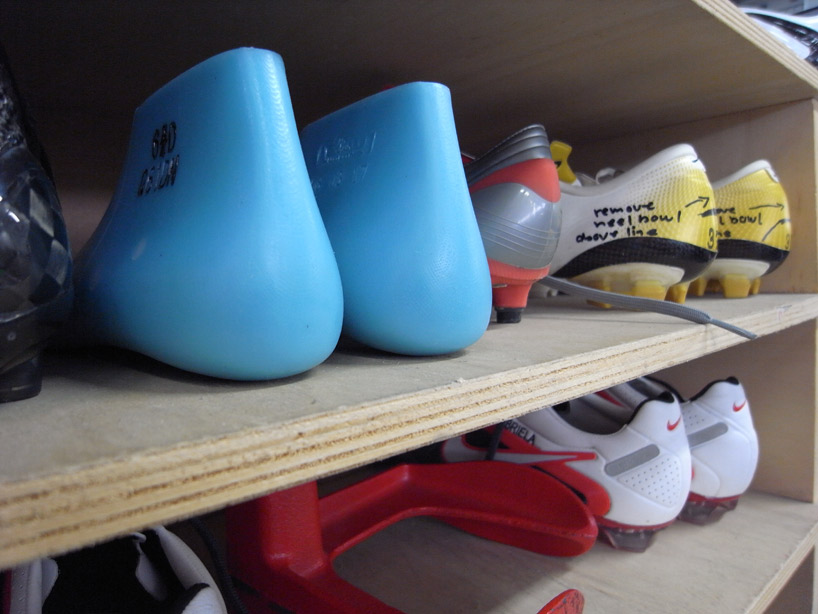 boot-shapers and half completed shoes wait on a shelving systemimage © designboom
boot-shapers and half completed shoes wait on a shelving systemimage © designboom
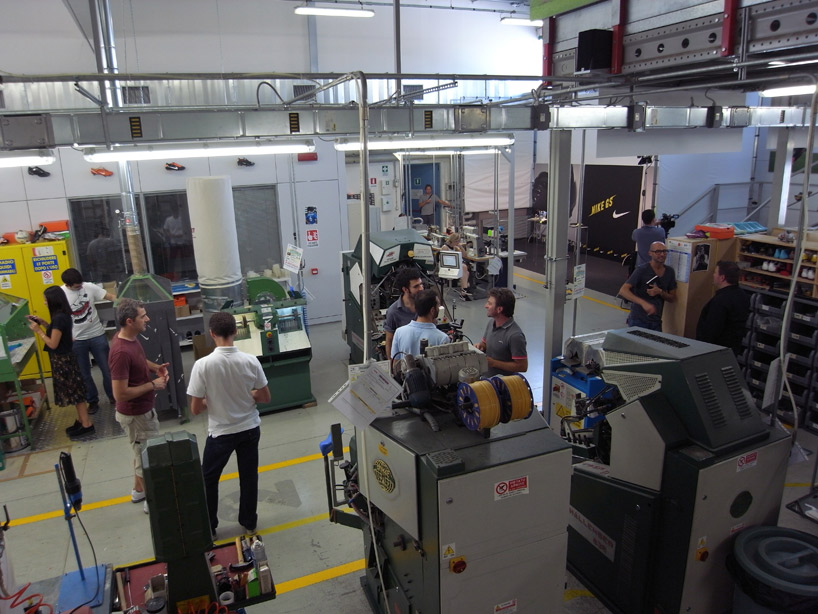 nike’s montebelluna factoryimage © designboom
nike’s montebelluna factoryimage © designboom
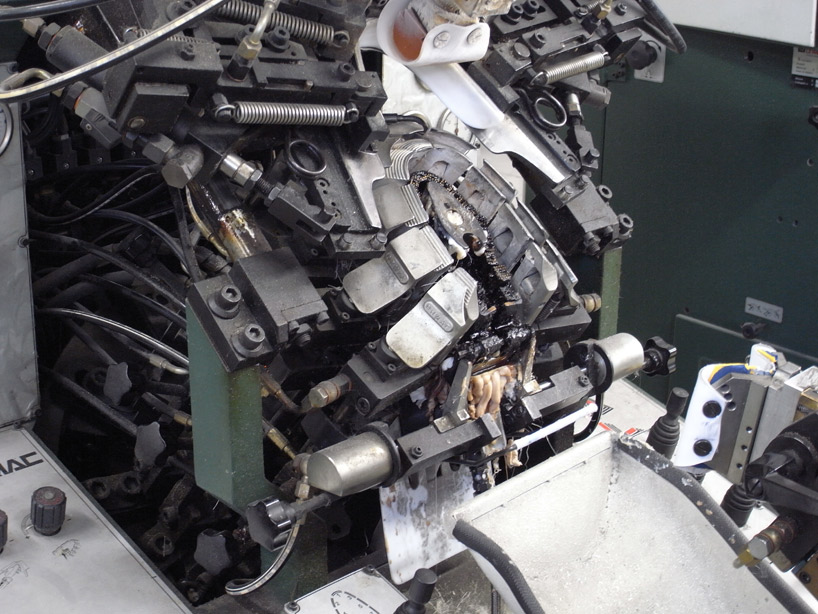 detailed perspective of a machine in the manufacturing line for the nike GS bootimage © designboom
detailed perspective of a machine in the manufacturing line for the nike GS bootimage © designboom
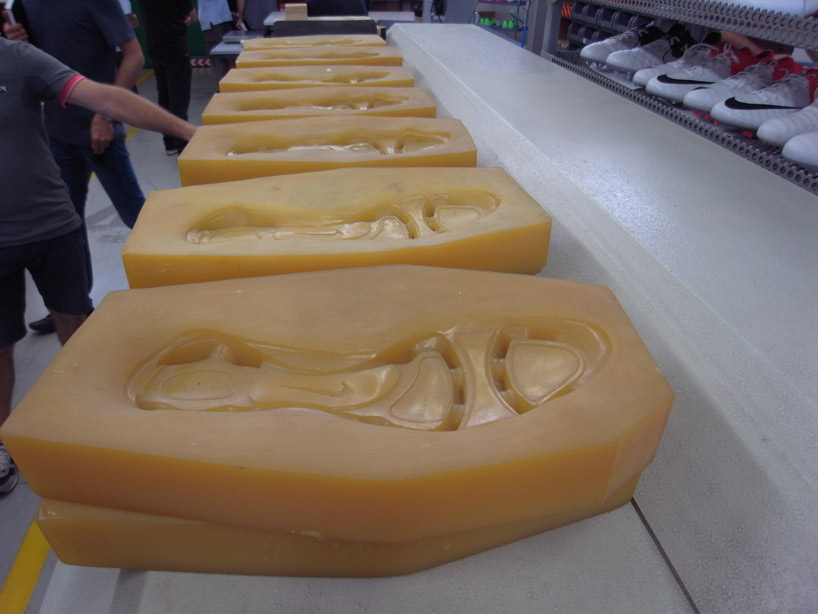 moulds for the soul of several nike football shoesimage © designboom
moulds for the soul of several nike football shoesimage © designboom
 each of the baskets contain a collection of differing plastic components in which each shoe takes its size and general shapeimage © designboom
each of the baskets contain a collection of differing plastic components in which each shoe takes its size and general shapeimage © designboom
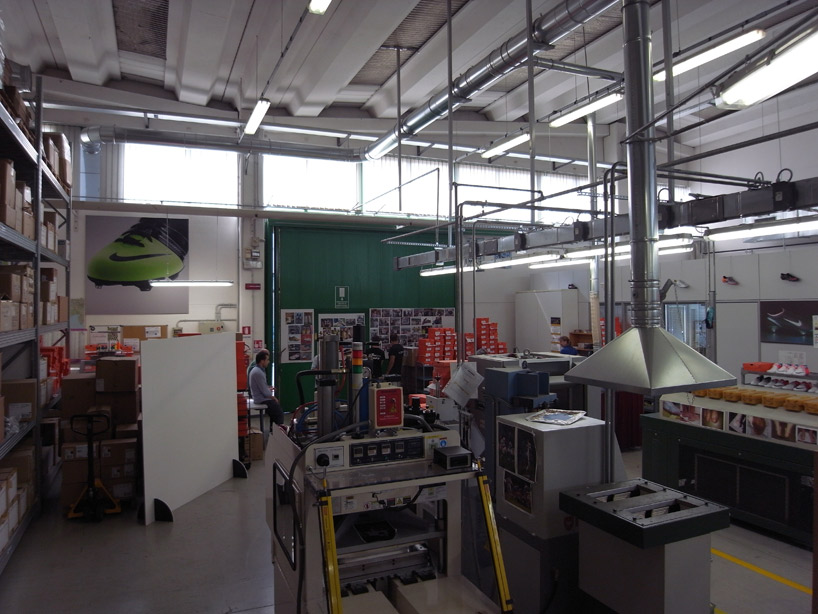 another perspective picturing the production facilityimage © designboom
another perspective picturing the production facilityimage © designboom
nike GS is produced in such a way that the design has considered both lowe nvironmental impact in combination with heightened performance engineering for what is UK-born, US-based designer andy caine and nike’s lightest, fastest, and lowest environmental impact production boot for the company to date. the specialized italian production facility employs renewable energy for the construction of the shoe which featuring recycled and renewable materials throughout its design.
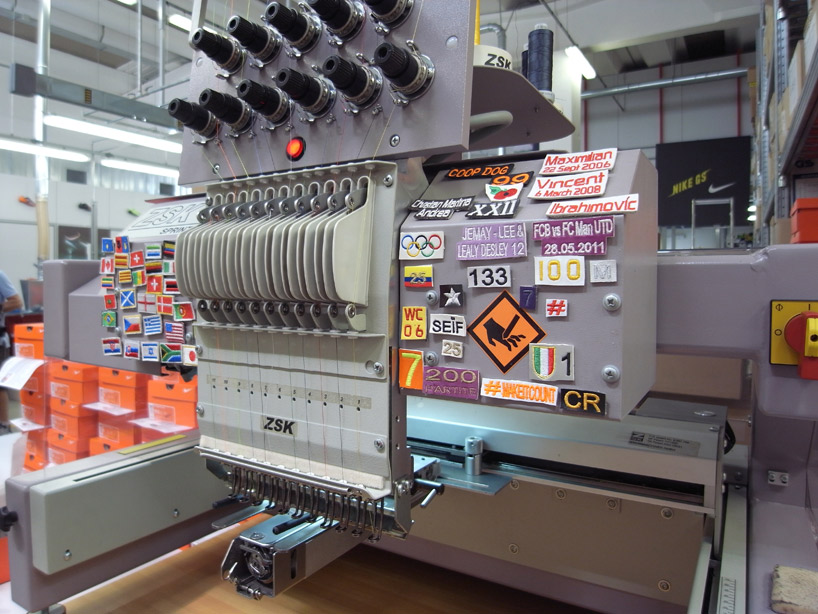 industrial sewing machine which embroiders a custom logo, name and country flag onto each shoeimage © designboom
industrial sewing machine which embroiders a custom logo, name and country flag onto each shoeimage © designboom
 boots packaged and labeled according to the player- display of the boots which nike has created image © designboom
boots packaged and labeled according to the player- display of the boots which nike has created image © designboom
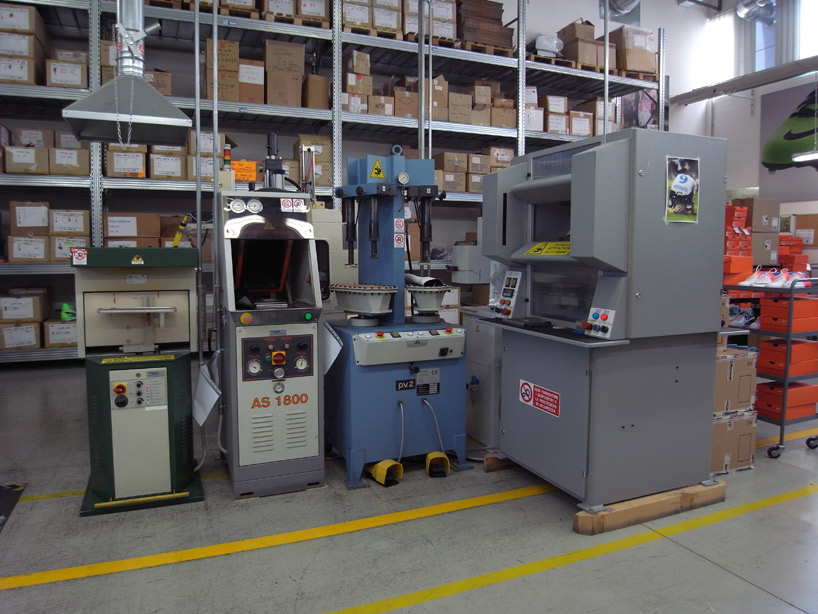 several of the high-powered production pieces required to build each of nike’s football bootsimage © designboom
several of the high-powered production pieces required to build each of nike’s football bootsimage © designboom
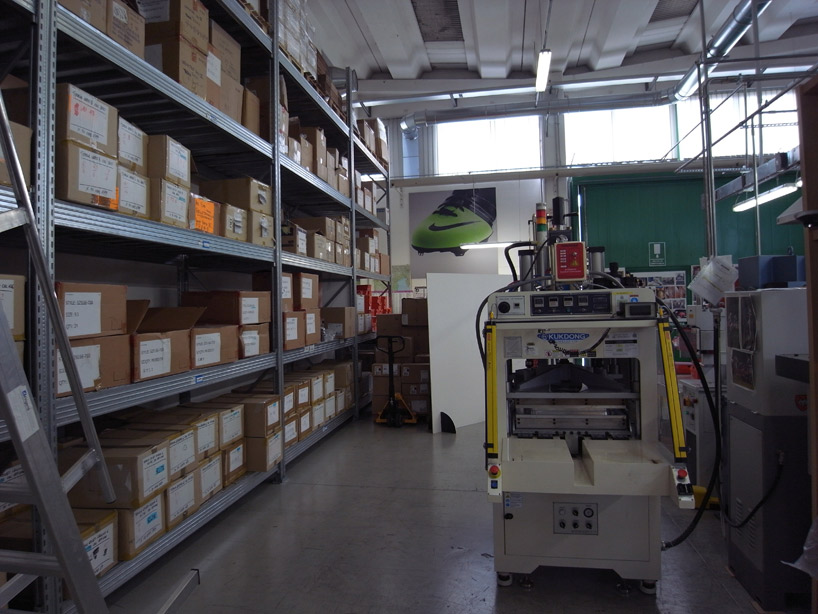 the cozyplant features a level of personalization in the manufacturing line, as many of the machines are decorated with sport or nike related photographsimage © designboom
the cozyplant features a level of personalization in the manufacturing line, as many of the machines are decorated with sport or nike related photographsimage © designboom
 image © designboom
image © designboom
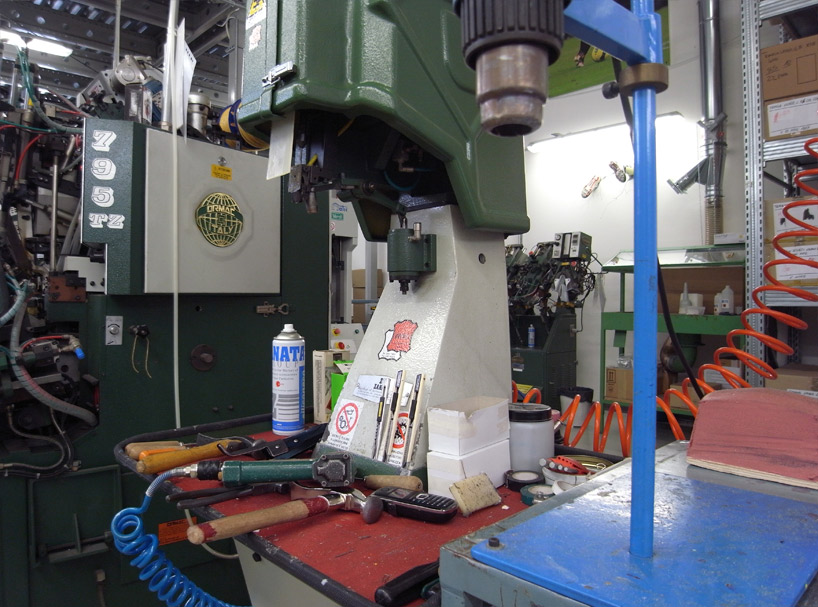 image © designboom
image © designboom
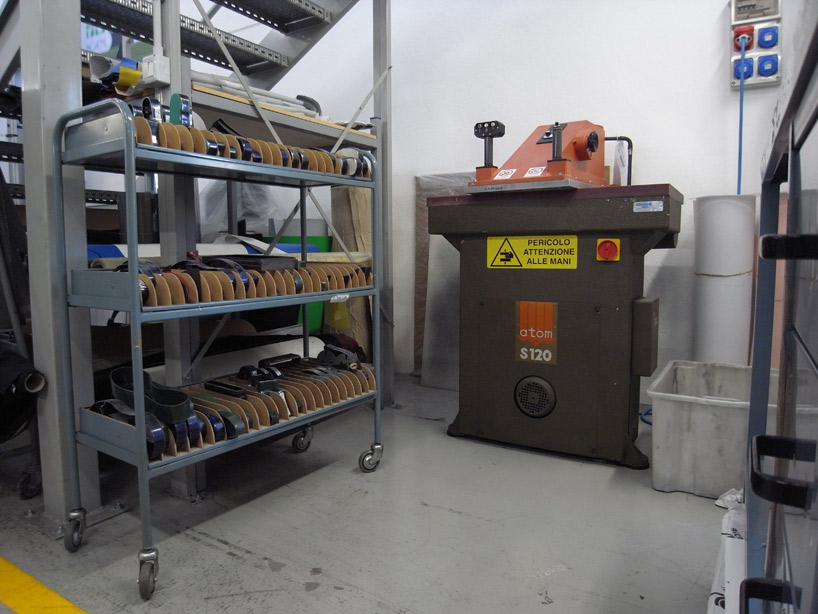 image © designboom
image © designboom
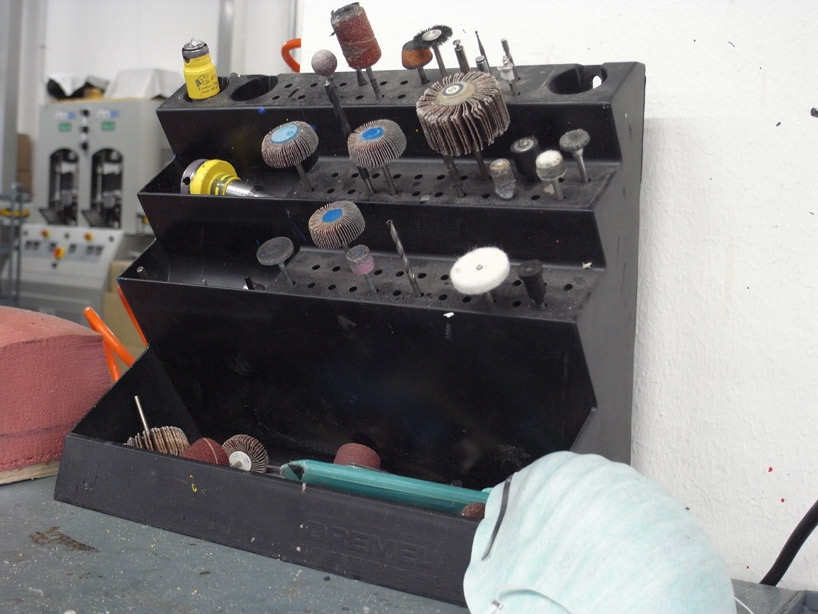 a workstation for precise additions to each piece of footwearimage © designboom
a workstation for precise additions to each piece of footwearimage © designboom
 workers who produce the top-quality boots by nike are incredibly attentive while directing these powerful pieces of equipment image © designboom
workers who produce the top-quality boots by nike are incredibly attentive while directing these powerful pieces of equipment image © designboom
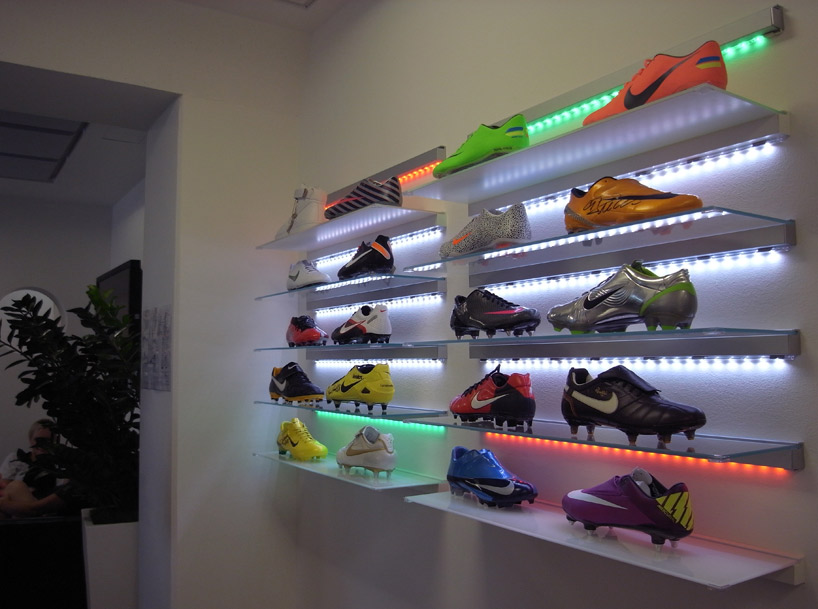 showcase of boot’s nike produces in the factory’s lobbyimage © designboom
showcase of boot’s nike produces in the factory’s lobbyimage © designboom
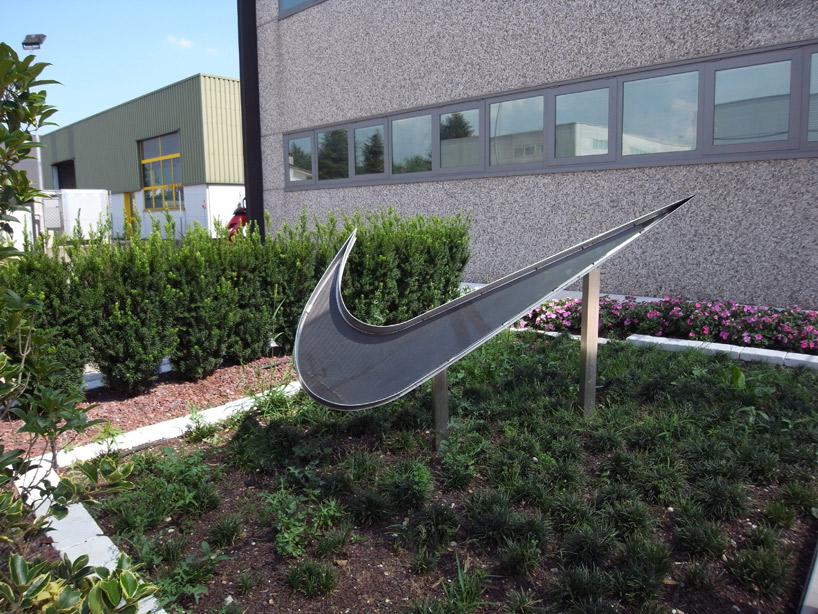 the nike symbol stands as the only indication to the hidden artisan football boot factoryimage © designboom
the nike symbol stands as the only indication to the hidden artisan football boot factoryimage © designboom


